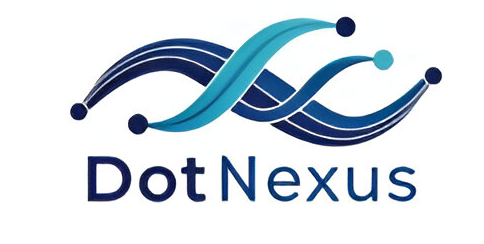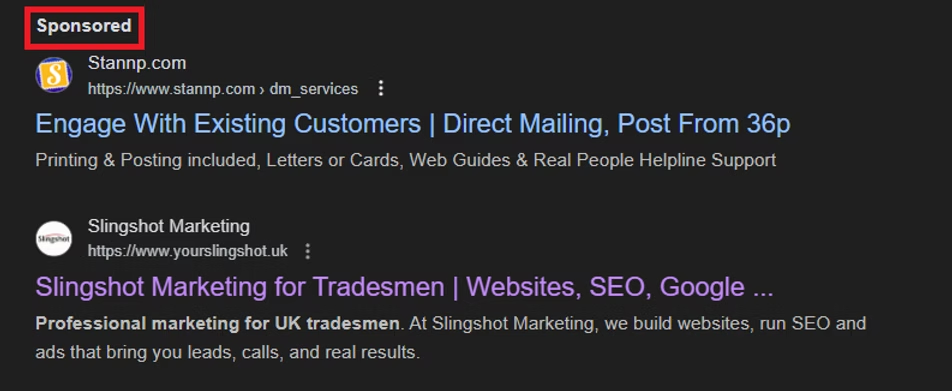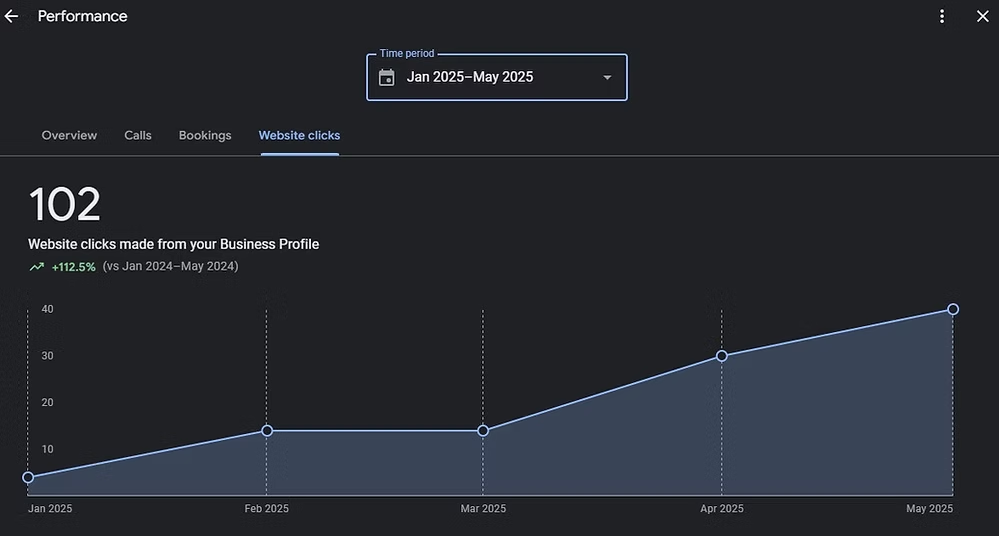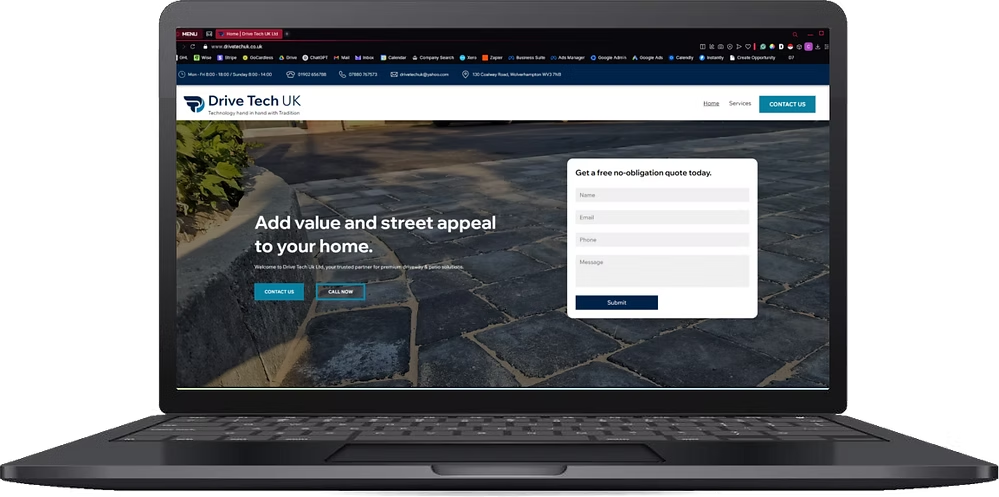Trade businesses like roofers, plumbers, and builders rely on a steady stream of local customers. To get those customers, you need to be visible where they’re looking – and today that means appearing on Google. The big question is, do you invest in Search Engine Optimisation (SEO) or pay for Pay-Per-Click (PPC) ads? Both SEO and PPC can get your business in front of potential clients, but they work very differently. In this post, we compare SEO vs PPC and explain why, for most trade businesses, SEO offers superior long-term value. (Hint: It’s not just about higher rankings, but about better ROI, trust, and sustainable growth.)
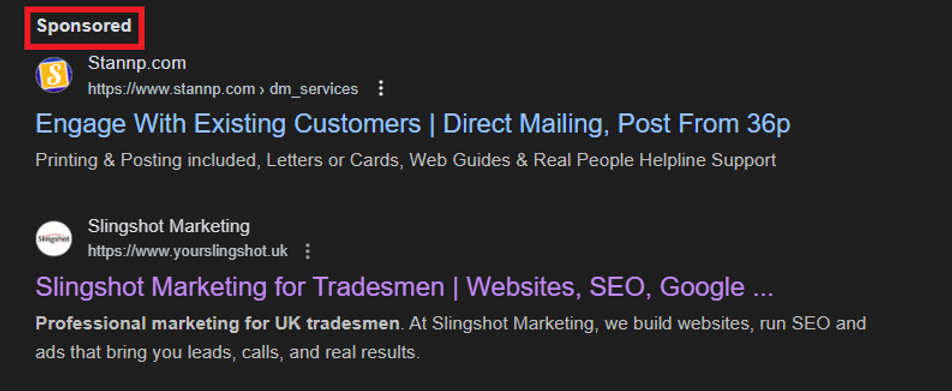
SEO vs PPC: What’s the Difference?
SEO (Search Engine Optimisation) is the process of improving your website so that it ranks higher in organic (non-paid) search results on Google and other search engines. In practical terms, SEO means your website could appear among the top results when someone searches for “electrician near me” or “roof repair in {your town}” – without you paying for each click. Achieving this involves optimizing your site’s content and code, earning backlinks, and ensuring your business is listed properly (like on Google Maps for local searches). SEO takes effort and time to build up, but the reward is free clicks and leads that come in day after day once you rank.
PPC (Pay-Per-Click) advertising, on the other hand, means paying to show up at the top of search results instantly. The most common form is Google Ads, where you bid on keywords so your ad appears when people search for those terms. With PPC, you get immediate visibility – your website link can show at the top of page one as a sponsored result. However, you pay a fee every time someone clicks your ad. Those costs can range from a few pence to dozens of pounds per click, depending on how competitive the keyword is. PPC is essentially renting space at the top of Google; as soon as you stop paying, your visibility disappears.
In short, SEO is about earning your spot in search results through relevance and quality, while PPC is about buying that spot. Now, let’s look at how they compare in terms of timing, cost, and results for a trade business.
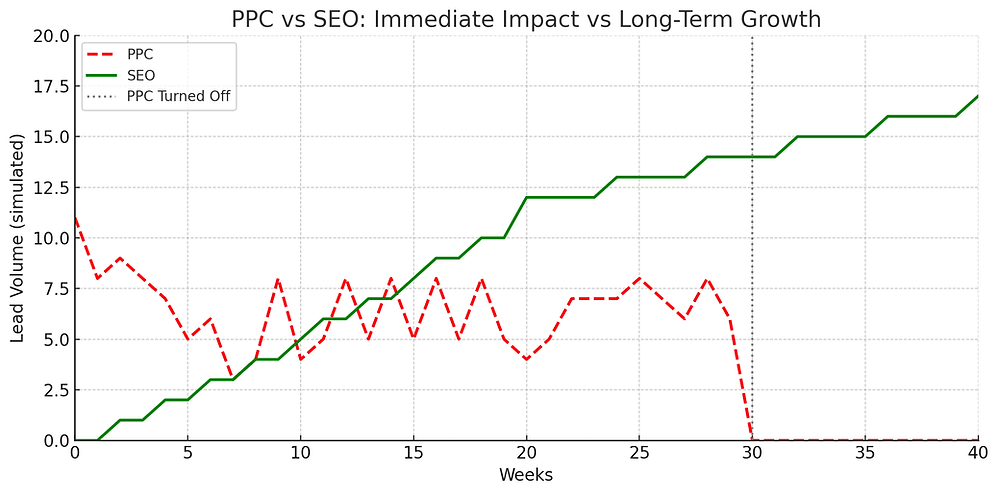
Immediate Results vs Lasting Results
One of the biggest differences between PPC and SEO is speed. If you need inquiries this week, PPC can deliver quick wins. A newly launched Google Ads campaign can start showing your site to potential customers almost immediately. This immediacy is valuable for a new business or an urgent promotion. However, there’s a catch: those results are short-lived. You pay for every click, and as soon as your budget dries up, so do your calls. In other words, the moment you pause your ads, your website vanishes from the top of Google.
SEO works in the opposite way. It typically takes longer to climb the rankings – often a few months for a local trades business to see significant movement. You won’t be number one on Google overnight. But the payoff is that once you do rank well, you can continue to get leads without paying for each visit. Good SEO builds your online presence and keeps your business visible in the search results for the long haul. It’s like planting seeds and nurturing a garden; you won’t get full blooms immediately, but when you do, they keep coming back season after season. This long-term approach actually helps your business grow rather than just giving a temporary boost.
Many successful trade companies treat SEO as a long-term investment in steady growth. You might wait a bit longer to see results, but those results compound over time. For example, a blog post or service page you optimize today can continue to bring you inquiries a year or two from now at no extra cost. In contrast, a PPC ad will bring traffic only as long as you feed the meter. This difference is crucial when planning your marketing: do you want a quick fix, or a solution that keeps working for you? Most tradesmen find that while PPC is good for a quick influx, SEO is what creates lasting momentum.

Cost and ROI: SEO Offers Better Value
Another major difference between SEO and PPC is how you pay for leads, and this has big implications for your return on investment (ROI). At first glance, SEO might not seem “free” – after all, you might pay an agency or spend your own time to improve your site. However, the traffic and clicks you get from organic search don’t incur a direct charge. Whether 10 people or 1,000 people click your organic listing, you pay the same fixed cost for your SEO efforts. PPC, by definition, charges you per click. That means costs can quickly add up, especially in competitive trade industries where each click can be a few pounds. You can see a breakdown of what SEO typically costs here.
In fact, the cost per click in Google Ads has been rising across many industries. Recent data showed that in 2024, 86% of industries saw higher click costs compared to the previous year. Home improvement and trades services are among the more expensive categories, with average Google Ads costs of around $6–7 per click (≈£5) in those sectors. Think about that: if 100 people click on your plumbing ad, you might spend around £500 just for those visits, even if only a handful of them turn into actual customers. And as more competitors start advertising, those clicks tend to get pricier over time.
SEO flips this cost equation. Instead of paying for each visitor, you invest in improving your site and content. This upfront investment yields “free” organic clicks for months and years to come. Over the long run, businesses often find the cost per lead via SEO is much lower than with PPC. According to industry research, inbound leads (like those from organic search) cost about 61–62% less than leads from outbound methods. That’s a huge difference in marketing efficiency. It’s no wonder that 60% of marketers say inbound strategies (like SEO) are their main way to generate leads now, because those leads last longer and cost less over time.
ROI isn’t just about cost – it’s about the quality of the leads and the sales you ultimately get. Here, too, SEO shines. When you rank organically, customers often perceive you as a top local provider (since Google’s algorithm “chose” you for that spot). They often come with higher trust and intent. Statistics show that SEO leads have around a 14.6% close rate, whereas outbound leads (like those from cold calls or broad ads) close at only about 1.7%.
Even if PPC leads are not as cold as a random cold call, they still don’t carry the same trust factor as organic results. In many cases, the ROI from SEO improves over time – you get more leads for the same spend – while the ROI from PPC can diminish if ad costs rise or if you have to spend more to outbid others. It’s telling that about 49% of marketers believe organic search is the most profitable channel they use, which speaks to SEO’s efficiency in turning marketing investment into actual profit.
To sum up on costs: PPC is like an ongoing rental expense – great for short-term visibility but expensive to maintain. SEO is like owning an asset – you put in upfront work, but then reap rewards with much lower ongoing costs. For trade businesses with often limited marketing budgets, SEO provides a way to get off the “pay-per-lead treadmill” and enjoy a higher marketing ROI in the long run.

Trust and Click-Through Rates: Users Prefer Organic Results
Not only is SEO traffic cheaper in the long run, it also comes with a bonus: people trust organic search results more than ads. This isn’t just a feeling; it’s backed by user behaviour data. Most of us have become a bit “ad-blind” when using Google. We skip over the sponsored links marked “Ad” and look straight at the regular results. In fact, studies show as many as 70% of users click on the organic search results, vs. only ~30% who click on paid ads. Another analysis found that 94% of people scroll past the ads entirely and go directly to the organic listings. The takeaway is clear: if you rank well organically, you’re likely to get the lion’s share of clicks for that search term.
Why do users prefer organic results? One reason is credibility. Appearing high in the organic results signals that Google’s algorithm (and by extension, the crowd wisdom of the web) considers your site relevant and authoritative for the query. It’s essentially a vote of confidence, so users feel more comfortable clicking. By contrast, everyone knows that anyone can pay for an ad. A paid ad doesn’t automatically earn trust – some people might even be sceptical of it, thinking “this company is advertising to me” rather than “this company earned its rank.” For a homeowner looking for a trusted tradesperson, that trust factor is huge. They need to feel confident that the roofer or electrician they click on is reliable; being in the top organic results helps convey that trust in a way a little “Ad” label might not.
Moreover, organic results usually provide more informative content (since SEO often involves publishing helpful pages or articles), whereas PPC ads are short and transactional. A searcher might scroll for a result that answers their questions or thoroughly describes a service – something your SEO-optimised page can do, but a small ad cannot. By focusing on SEO, you’re not just chasing clicks, you’re building a trustworthy presence online. Over time, this can enhance your brand reputation. Customers often remember that “you were the top result on Google” which subtly implies you’re a leader in your field.
In terms of conversions, traffic from organic search often engages better. Because these visitors actively sought out your service (and chose your listing out of the others), they’re typically highly targeted. They were looking for your trade service in their area, not casually clicking an ad. That means they are more likely to call, request a quote, or book a job once they’re on your site. This aligns with the earlier stat about higher close rates for SEO-sourced leads. All of this is to say that ranking in the organic results not only gets you more clicks, but often better-quality clicks that turn into real customers.
For a trades business, building trust is essential – your clients are inviting you into their homes and investing in significant projects. Showing up prominently in organic search helps build that trust before the first phone call. It’s like having a referral from Google itself. PPC ads can certainly generate calls, but they come with that inherent hurdle that the person on the other end knows you paid to be there. With SEO, your marketing feels more like a service to the customer (providing them with the exact information they need) rather than an overt advertisement.
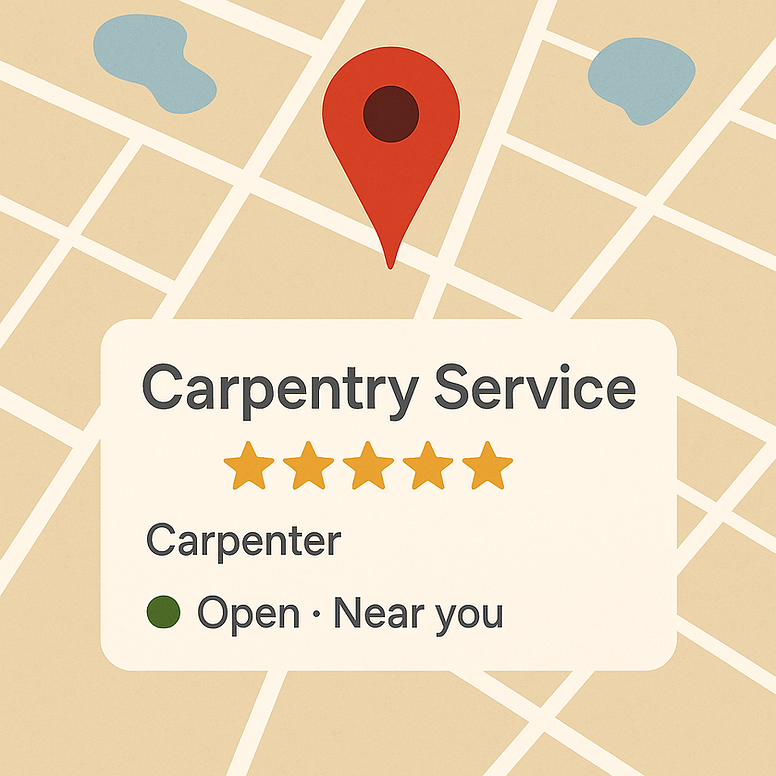
Local Reach: SEO Puts You Where Your Customers Are Searching
Trades work is inherently local – your customers are typically in your town or region, looking for someone nearby who can do the job. This is where SEO has a special edge: local SEO techniques make sure you appear in local searches and on Google Maps at the exact moment someone nearby needs a tradesman. When someone searches for “emergency plumber in Leeds” or “garden landscaper near me”, Google will often show a map with local businesses (the Local Pack), as well as the organic results for that area. If you’ve invested in SEO, your business has a great chance to appear in those spots, grabbing the attention of a customer who is ready to call right now.
Consider that nearly 46% of all Google searches have local intent (the user is looking for something in a specific area). That’s almost half of the searches! Local searches often lead directly to action – by one estimate, 78% of local searches result in an offline purchase or a phone call/visit to the business. This is huge for trade businesses. It means if someone in your service area finds you in their search results, there’s a very high chance they will reach out for your services. SEO is what makes sure you (and not a competitor) show up when that search happens.
PPC ads can be targeted locally too (you can set your Google Ads to only show in certain geographic areas). However, those ads still suffer from the trust and cost issues mentioned above. Also, in local searches, many users skip straight to the map or organic results under the ads. With a strong local SEO strategy – including optimizing your Google Business Profile (formerly Google My Business) – your company can appear in the map pack with a star rating and phone number visible. Being in the map pack or top organic results essentially lets you capture free traffic for local high-intent searches. For instance, our SEO work for clients involves making sure if someone searches “roofer in {town}” or “best electrician {town}”, our client is front and centre.
Another advantage is that SEO marketing content can target specific services or questions that local customers have. For example, a blog post on “How much does a new driveway cost in {Your County}?” could rank and attract local homeowners researching a project, who might then call your paving business. PPC is not well-suited for such informative or long-tail queries because you wouldn’t want to pay for every person just seeking information. But SEO content can pull in those folks and gently funnel them to your services, building your pipeline of future customers.
In short, SEO connects you with local customers at the exact moment they need you. This is especially powerful for trades because timing is everything – if someone’s boiler breaks, they’ll search and likely hire one of the first reputable names they find. If your SEO is on point, that name could be yours. By contrast, if you rely solely on PPC and your budget runs out or your ad doesn’t show for that particular query, you miss the opportunity. With SEO, once you’re well-positioned, you’re essentially always “open for business” online, capturing leads around the clock without additional spending.

The Drawbacks of PPC (And Why They’re Hard to Ignore)
We’ve touched on some of the downsides of PPC already, but it’s worth laying them out clearly because they often become pain points for businesses that rely heavily on paid ads.
- Continuous Cost: The most obvious drawback: PPC is a continuous expense. There’s never a point where Google says “Okay, you’ve paid enough, we’ll keep showing your ad for free now.” If you want the phone to keep ringing via ads, you must keep spending. This can turn into a money pit if not carefully managed. As you grow, you might have to increase your budget to get more leads, and the costs scale directly with volume, unlike SEO, where doubling your organic traffic doesn’t double your cost.
- Ad Fatigue and Competition: In popular trade niches, many companies run Google Ads. Users can see multiple ads for plumbers or builders and might click the first one, or the one with the most compelling ad text. There’s constant competition to write better ads and bid higher. Over time, ad performance can drop as people become blind to the same ads, or as new competitors outbid you. You’re essentially in an auction 24/7. In contrast, with SEO, once you have the top spot, you’re not paying more because someone else also wants that spot – they have to earn their way up organically, which is a higher barrier than just bidding more.
- No Long-Term Build-Up: Perhaps the biggest issue: PPC has no residual benefit after you stop paying. All the traffic and leads you got last month from ads have no direct impact on this month’s performance if you turn the ads off. There’s no snowball effect. On the other hand, the blog articles, backlinks, and optimized pages you built through SEO do have a cumulative effect. They contribute to your authority and ranking for months to come. PPC is more like a tap – turn it on, leads flow; turn it off, leads dry up. Many trade businesses find that a bit nerve-wracking; if you have a tight month and cut your ad spend, suddenly your pipeline can go empty.
- Lower Profit Margins: Because PPC adds a cost for each acquired customer, it effectively lowers your profit per job. If it costs you £50 in clicks to land a £500 job, that’s £50 less profit (and if the job is £100, then £50 is a huge chunk!). With SEO, the incremental cost of acquiring each additional customer is much smaller. Over time, relying on PPC can squeeze your margins – or force you to increase prices – neither of which is ideal in price-sensitive local markets.
None of this is to say PPC is evil or never works. PPC can work and does have its place (which we’ll discuss next), but these drawbacks make it something you need to approach carefully. We’ve seen many tradespeople try Google Ads on their own and give up after burning through a few hundred pounds with little to show for it. It requires expertise to target the right keywords, negative keywords (to avoid irrelevant clicks), compelling ad copy, and a good landing page. And even with all that, the fundamental challenges above remain.
In contrast, investing that effort into SEO addresses the root of online visibility in a more sustainable way. Instead of paying for a temporary spotlight, you’re building your own lighthouse that shines brightly on the internet for your trade. Next, we’ll consider how a balanced strategy might use PPC without undermining the primacy of SEO.

When to Use PPC (And Why SEO Should Still Lead)
Is there ever a time for PPC? Yes – PPC can be useful as a supplement to SEO in certain situations, especially for trade businesses that are just starting their online marketing or that have specific short-term goals. Here are a few scenarios where PPC might make sense:
- Starting Out / SEO Not Established Yet: SEO takes time. In the first few months of an SEO campaign, you might not be on page one yet. During this phase, running a modest Google Ads campaign can help you get some visibility and leads while the SEO groundwork is being laid. Essentially, PPC can act as a bridge to cover the gap before your organic rankings kick in.
- Targeting Niche Keywords or Specials: If you have a particular service that is hard to rank for quickly, or a seasonal offer (like an AC servicing deal in summer), PPC can put you in front of people searching for those specific terms right away. It’s good for promotions or niche jobs that you want to boost temporarily. Just remember to turn off or adjust those campaigns so you’re not paying for clicks on an outdated offer later.
- Controlling Exact Placement: Sometimes you might want to appear for highly specific search queries or in a competitor’s searches (e.g., showing an ad when someone searches a competitor’s name). SEO might not get you there (you likely won’t rank for someone else’s brand name, for instance), but PPC can. In these cases, ads can capture some extra traffic.
However, even when using PPC, it should complement your SEO-first strategy, not replace it. Think of PPC as a tactical tool – useful for immediate needs – whereas SEO is the strategic foundation of your online presence. The goal should be to gradually reduce reliance on PPC as your organic rankings climb. Many of our clients start out spending on Google Ads, but after 6-12 months of SEO, find that they can scale back the ad budget significantly because organic search is bringing in most of their leads. That’s exactly what you want: PPC becomes optional, not a lifeline.
If you do use PPC, be smart about it. Set clear budgets and track the results. Make sure you know your cost per lead from ads, and constantly ask if that could be lowered or if those funds would yield more leads if put into SEO content or improving your website’s conversion rate. In a lot of cases, we find the answer is yes – money put into SEO yields a better long-term payoff.
Finally, remember that user behaviour trends favour SEO. Many searchers simply trust the organic results more, as we discussed. So even with an ad at the top, a strong organic presence is needed. We’ve often seen cases where a user clicks an ad, isn’t fully convinced, then scrolls and sees the same company in the organic listings – and that second appearance (organically) is what made them convert. If you were only in the ad and not in the organic, you lose that second chance at credibility. So, use PPC when you must, but keep building your organic strength relentlessly.
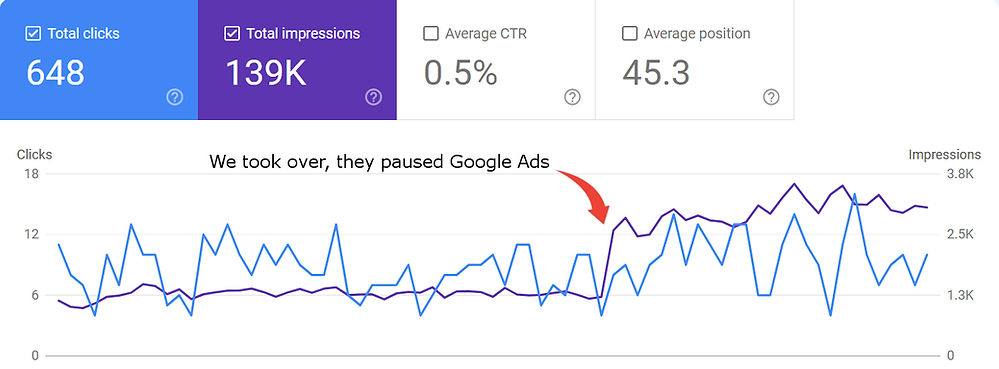
Our SEO Services for Trades (How We Can Help)
Optimising for SEO might sound complex or time-consuming – especially when you’re busy running a trade business – but that’s where partnering with the right experts makes a difference. At Slingshot Marketing, we specialise in SEO for trade businesses and have built a service tailored to your needs. In fact, we’ve helped 100+ trades businesses across the UK rank higher on Google and win more local work, from roofing contractors and landscapers to electricians and builders. Our approach is designed to deliver real results without you having to navigate the technical bits.
What do we do? First, we set you up for SEO success from day one by building you a professional, optimised website (if you don’t already have one or if your current site isn’t up to scratch). This website is created specifically to convert visitors into inquiries – with fast loading speed, mobile-friendly design, clear calls to action, and relevant content for your trade. We include all the on-page SEO essentials so that when your site goes live, it’s ready to start ranking for local keywords. Whether someone searches “emergency electrician in {your town}” or “best {trade} near me,” we want you to show up prominently.
Next, we handle the ongoing SEO work behind the scenes: finding the right keywords that your customers search for, creating useful content (like service pages or blog posts answering common questions), building high-quality backlinks, and continuously improving your Google Business Profile for a strong local presence. We also monitor your rankings and traffic and provide regular updates, so you know exactly how your visibility and leads are growing. Our philosophy is that SEO for trades is not a one-off job – it’s a monthly effort that keeps compounding your results. The longer you work on SEO, the more ground you gain, and the fewer ads you’ll ever need to pay for.
Importantly, we’re transparent and communicative. With us, you won’t be left guessing what’s happening. Clients often reach out via WhatsApp for quick questions or updates, and we like it that way because it means you’re never in the dark about your marketing. We know tradespeople value straight-talking service, so we avoid jargon and focus on what matters to you: more calls, more bookings, and more growth for your business.
By choosing a partner who understands both SEO and trades, you get an edge. We know the platforms (yes, we can manage your Google Ads too if needed), but we always aim to maximise your organic growth so you’re not dependent on ad spend. The bottom line is, that we help your marketing budget work smarter, not harder – investing in long-term assets like your website and search rankings, which will pay dividends far beyond any short-term ad campaign.
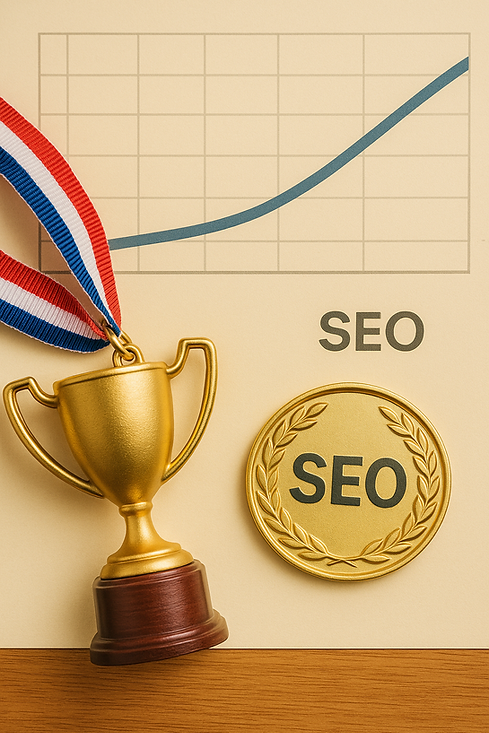
Conclusion: SEO Delivers Lasting Value (The Clear Winner)
When it comes to SEO vs PPC for trade businesses, the evidence and experience point to one conclusion: SEO is the smarter, more sustainable choice for long-term success. PPC advertising can be useful for a quick boost or supplemental lead flow, but it cannot match the overall benefits of a strong organic presence on Google. With SEO, you build credibility and trust, since the majority of users prefer organic results over ads. You achieve cost-efficient growth, as inbound SEO leads cost significantly less and convert better than those from paid channels. And you create a lasting asset – your website and rankings – that keeps generating leads 24/7 without ongoing ad fees.
On the flip side, PPC’s quick results come at the expense of high ongoing costs and zero residual value once the spending stops. It’s a bit like a tap you have to keep paying to open. In tight markets and for small businesses, that can become unsustainable. SEO is more like building your own well: it takes effort upfront to dig, but then you have a reliable source of water on your property. For tradesmen who want to ensure a steady pipeline of jobs without constantly worrying about ad budgets, SEO is the clear winner in this matchup.
In the evolving world of online marketing, one thing remains constant: people will continue to search Google for the services they need, and they’ll gravitate toward the businesses that show up prominently and organically. By investing in SEO now, you’re setting your business up to capture those customers for years to come. It’s a marketing investment that keeps on giving, yielding more clicks, more calls, and more booked jobs, all with better profit margins.
If you’re ready to elevate your trade business through SEO and reap the benefits of higher rankings and free organic leads, we’re here to help. Feel free to get in touch with Slingshot Marketing for a friendly chat about how we can tailor an SEO strategy for you. We believe in the work you do, and our job is to make sure the people who need your services can find you easily online. In the SEO vs PPC debate, we’ll make sure your business wins – with a strong search presence that leaves competitors (and costly ads) in the dust.
